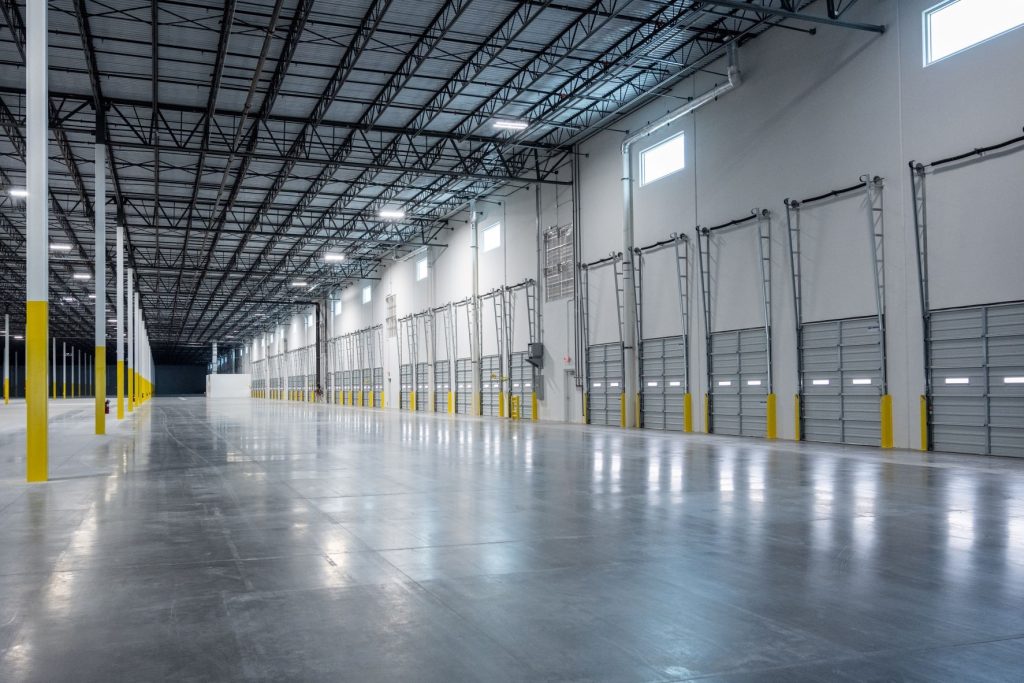As companies strive to meet consumers’ expectations for everything on demand, we’re seeing strategic shifts to optimize logistics from the warehouse to the front door. While these developments are often the hallmark of larger enterprises, real estate firms and midmarket companies alike can still innovate their operations with the right investments and suppliers.
“When considering the future of e-commerce, the focus is often on the digital experience,” said Al Brooks, Head of JPMorgan Chase Commercial Real Estate. “But the most meaningful change is happening outside the consumer’s view, in a company’s physical operations.”
Those that move first stand to gain a competitive advantage. Opportunities are emerging in three areas:
- Warehouse location
- Warehouse functionality
- Transportation
The shifting landscape of warehousing
In logistics, location is everything. To accommodate same-day or same-hour delivery, companies are reconsidering the positioning of their warehouses and shifting away from large, highly centralized facilities.
Urban warehousing
Companies are repurposing dormant urban buildings into last-mile distribution centers. For companies that already have footprints in cities, it might mean adapting part of an existing space to include micro-fulfillment areas. But for most companies, it means identifying unused buildings.
Some of these older, presumed obsolete buildings are the most valuable—they sit right in the middle of the urban core. We don’t see this trend slowing down. – Al Brooks, Head of JPMorgan Chase Commercial Real Estate
This demand is increasing both property values and operational costs. As volume decreases within each location, companies should remain focused on inventory management, leveraging data to inform what products should occupy the limited spaces.
Secondary markets on the rise
Demand for warehousing space near secondary markets has grown. And as companies diversify their supply chains, new industrial hubs are emerging along the U.S.-Mexico border.
Laredo, Texas, for example, is now one of the largest inland ports in North America. “The emergence of Laredo shows companies are investing in the supply routes connecting the U.S. and Mexico,” said Reon Roski, CEO of Majestic Realty, a commercial real estate developer. “This approach could help prevent companies from becoming overreliant on just one or two suppliers in their global networks.”
Warehouses of the future
E-commerce, sustainability and new technology are influencing how companies adapt and design the warehouse space. Here are some ways business leaders are planning for the future:
Solving the trucking bottleneck: Dan Lewis, CEO and Co-Founder of Convoy, a digital freight network, sees opportunities for trailers to pre-position, load up and roll out of warehouses more efficiently. Trucks could enter and exit warehouses autonomously, which might also warrant more parking in and outside facilities.
Integrating robotics: The use of warehouse robotics is expected to grow by at least 50% over the next five years, according to the 2022 MHI Annual Industry Report. With robots becoming cheaper and more accessible, particularly as robotics-as-a-service becomes more available, some of Roski’s clients are aiming to be fully automated, while others are taking a hybrid approach where humans and machines work alongside one another.
Going electric: An emphasis on environmental, social and governance and carbon reduction initiatives—and an increasingly electric fleet—will require increased electrical capacity.
Increasing visibility: Real-time inventory tracking and warehouse management systems are driving visibility and efficiency. Warehouses may even move beyond the physical world into virtual environments, where companies can test operational changes on their digital twins.
Innovations along delivery’s last mile
Final-mile logistics now account for an estimated 53% of the total cost of shipping, according to Insider Intelligence. Motivated to lower costs while meeting customers’ demands for prompt delivery, companies are forging ahead with both proven and new technologies—on the ground and in the sky.
Collaboration across the public sector, private companies and communities is the only recipe for innovation in the last mile, according to Chris Ash, Senior Vice President at Hillwood, a Texas-based real estate developer and the developer of AllianceTexas.
“Interoperability is key. Outside that short list of large companies that can afford to develop their own hardware and software, the majority of the industry is going to have to lean on each other.”
Autonomous technology
Autonomous technology has three key benefits: cost reduction, safety and efficiency. In current use, it’s most effective in repeatable segments of the supply chain, according to Ian Kinne, Director of Logistics Innovation at Hillwood. Hillwood has been working to integrate autonomous drayage where containers are moved from an intermodal port to a warehouse and has been deploying autonomous last-mile technology within its AllianceTexas development.
Electrifying the fleet
To help keep a lid on fuel costs and stay ahead of potential future regulation, more trucks are going electric. Electric trucks require less maintenance and offer an enhanced driving experience. But adoption among heavy-duty freight trucking may depend on the costs and capabilities—and the availability of truck-friendly charging stations.
Drone delivery
Drone delivery is already increasing market share, albeit with infrastructure, regulation and consumer appeal obstacles to overcome. In 2021, Hillwood partnered with Wing on a small pilot to tackle aerial advancement in last-mile logistics. Ash believes it has proven the potential and sees drones becoming one more delivery option at checkout for specific use cases in retail or healthcare.
What’s next?
This everything-on-demand culture is driving innovation along the supply chain. Companies across industries have a rare opportunity to find partners that can shape this reality and set a new standard for their peers.
